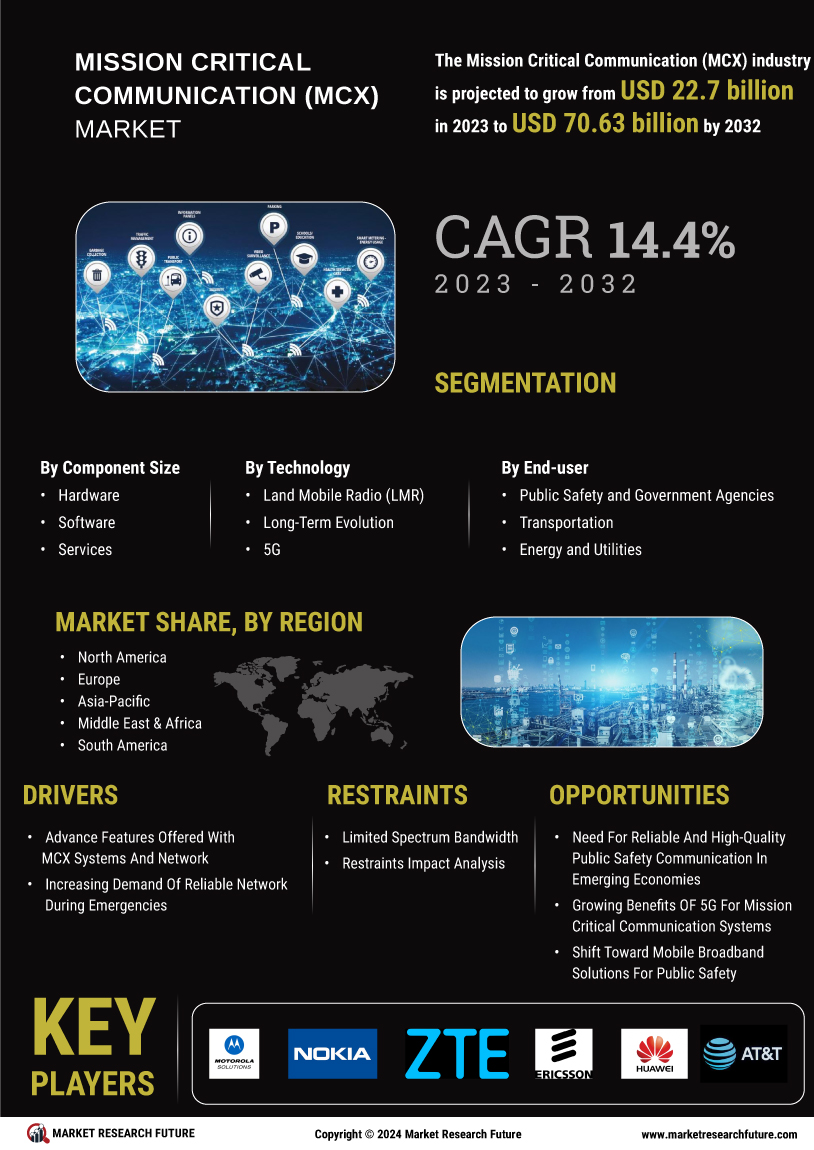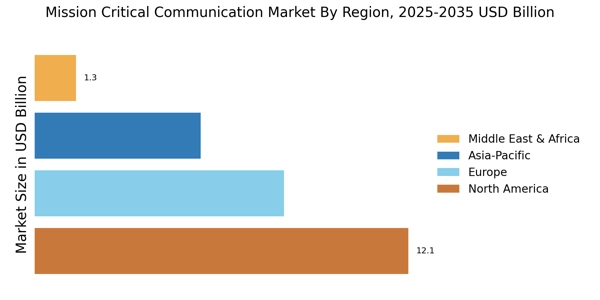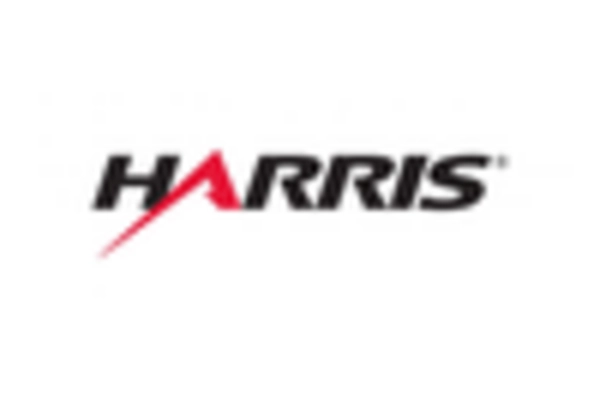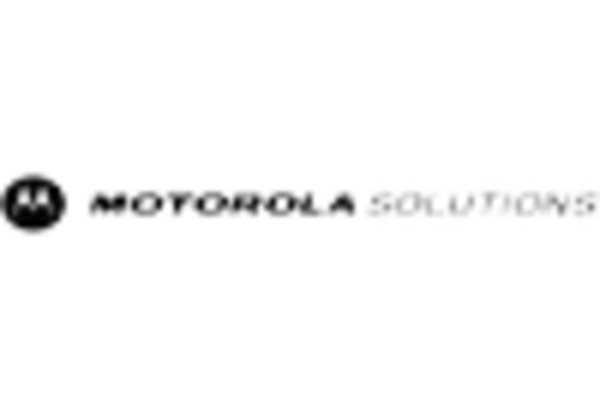Regulatory Support and Standardization
Regulatory frameworks and standardization initiatives significantly influence the Mission Critical Communication Market. Governments and regulatory bodies are increasingly recognizing the importance of establishing clear guidelines for communication systems used in critical operations. This support fosters an environment conducive to innovation and investment. For example, initiatives aimed at standardizing communication protocols across different agencies enhance interoperability, allowing for seamless collaboration during emergencies. As a result, organizations are more likely to invest in mission-critical communication solutions that comply with these regulations, thereby driving market growth. The establishment of such standards is essential for ensuring that communication systems can effectively support diverse operational needs.
Advancements in Communication Technologies
Technological advancements play a pivotal role in shaping the Mission Critical Communication Market. Innovations such as 5G networks, satellite communication, and advanced encryption methods are enhancing the capabilities of communication systems. The introduction of 5G technology, for instance, is expected to revolutionize the way critical communications are conducted, offering faster data transmission and improved connectivity. This is particularly relevant for emergency services that require instantaneous communication to respond effectively. Furthermore, the integration of advanced encryption techniques ensures that sensitive information remains secure, which is crucial for maintaining public trust and operational integrity in mission-critical scenarios.
Integration of IoT in Communication Systems
The integration of Internet of Things (IoT) technologies into communication systems is transforming the Mission Critical Communication Market. IoT devices enable real-time monitoring and data collection, which are essential for effective decision-making in critical situations. For instance, sensors deployed in various environments can provide vital information to emergency responders, enhancing situational awareness. This integration is likely to lead to more efficient resource allocation and improved operational effectiveness. As organizations increasingly adopt IoT solutions, the demand for communication systems that can support these technologies is expected to rise, further propelling the growth of the mission-critical communication market.
Increased Demand for Reliable Communication Systems
The Mission Critical Communication Market experiences heightened demand for reliable communication systems, particularly in sectors such as public safety, transportation, and utilities. As organizations recognize the necessity for uninterrupted communication during emergencies, investments in robust communication infrastructure are surging. According to recent data, the market is projected to grow at a compound annual growth rate of approximately 10% over the next five years. This growth is driven by the need for real-time data sharing and coordination among first responders and other critical personnel. The emphasis on reliability ensures that communication systems can withstand various challenges, including natural disasters and cyber threats, thereby reinforcing the importance of mission-critical communication.
Growing Focus on Public Safety and Emergency Response
The Mission Critical Communication Market is witnessing a growing focus on public safety and emergency response capabilities. As urbanization increases and populations grow, the need for efficient emergency response systems becomes more pronounced. Investments in communication technologies that facilitate rapid response to emergencies are on the rise. Data indicates that the public safety sector is expected to account for a substantial share of the market, driven by the need for enhanced coordination among various agencies. This focus on public safety not only improves response times but also enhances overall community resilience, making mission-critical communication systems indispensable in modern society.


















Leave a Comment